A huge tribute to one of the founding fathers of today’s Indian Republic: at 182 meters high, the Statue of Unity with the likeness of Sardar Vallabhbhai Patel is to date the tallest statue in the world. The tribute to the man who in the 1940s led the path of unification and independence from the British Kingdom is located near Rajpipla in Narmada district, on the river of the same name, two hundred kilometers southeast of Ahmedabad in the state of Gujarat, and was unveiled on October 31, 2018, in front of the highest officials of the state and the Republic. On that day, helicopters flew over the statue, causing red flower petals to fly over the monument.
The statue depicts Patel standing in simple clothes, wearing sandals, his gaze projected into the distance in a static stance with an expression that instills tranquility and without triumphalist accents, he who was Gandhi’s companion and pupil. The statue was designed by sculptor Ram Sutar, then 93 years old, and was created by Michael Graves & Associates in collaboration with Turner Construction and Meinhardt Grouped. It is forged in bronze, and as many as 12 thousand exterior panels of that metal cover it with a weight of 1,700 tons. It took 33 months of work by 3,400 workers with a cost of 34 billion rupees, or the equivalent of 430 million euros, to make it. The numbers of the construction are impressive: inside is a 5700-ton steel structure and another 18,500 tons of support bars, and over 760,000 cubic meters of reinforced concrete used.
Beneath it, as a basement, is a 44-meter-high building inside which is a museum to tell the facts and history oftwentieth-century India. The structure, built on a promontory overlooking the body of water, stands out in the center of the valley, and to reach it two major viaducts were built to accompany the visitor under the grandeur amplified by the surrounding landscape.

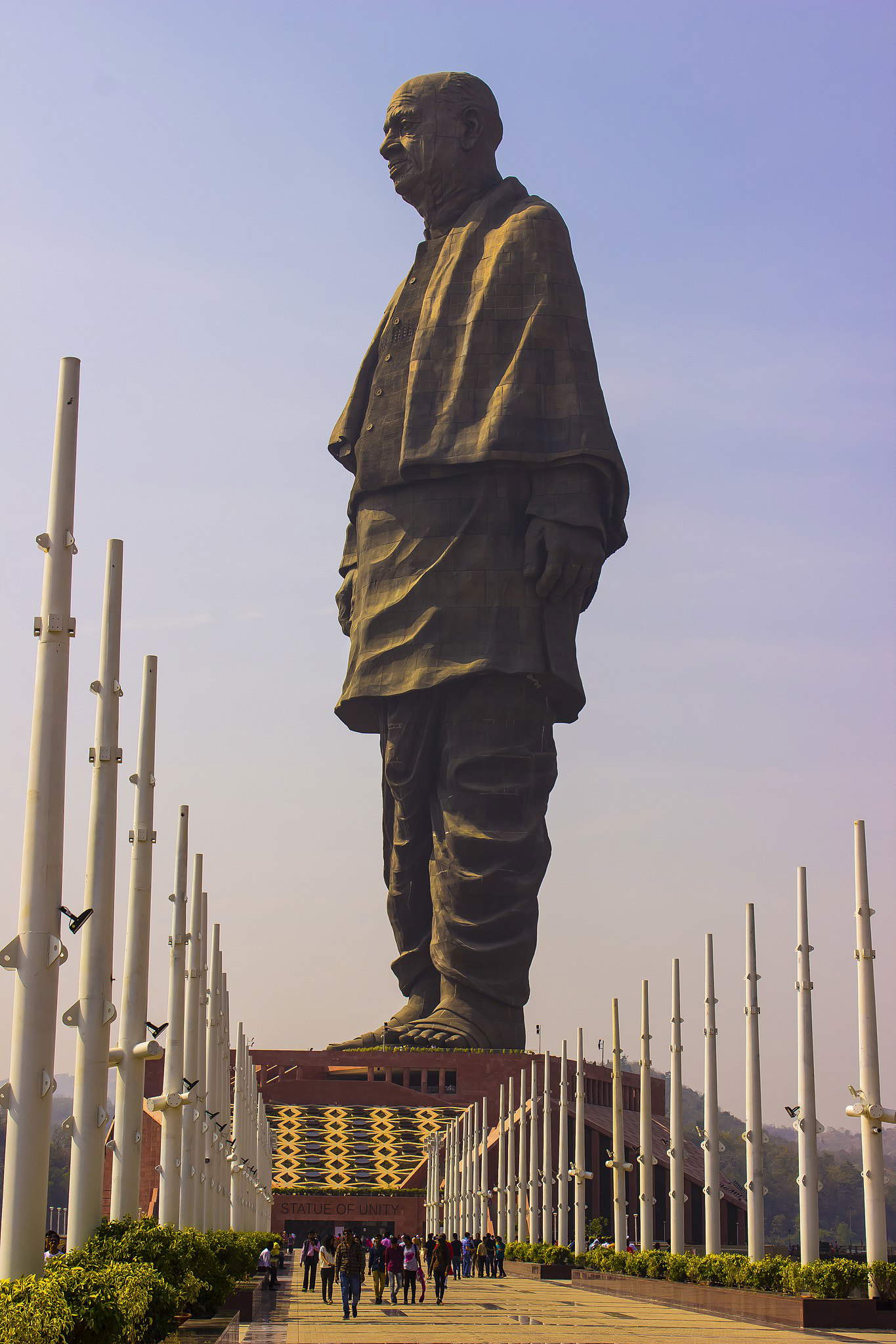
The sum of the height of the statue with its plinth makes the peak a whopping 226 meters, becoming by far the tallest statue in the world. It also comes first in the ranking that does not consider pedestals and plinths. In the latter in second place we have the 128-meter-high depiction of the Buddha at the Spring Temple in Lushan, China. The statue was completed in 2008 and its conception was a reaction to the Taliban’s destruction of Buddha statues in Afghanistan. The full name, in Italian, is “Great Buddha of the Central Plain Spring Temple” (we are near the hot springs of Tianrui). We are in the Mount Fodu Scenic Area and what is depicted is the Vairocana Buddha, Ādibuddha’s personal manifest aspect, placed upright on a 25-meter plinth representing the lotus throne. The total weight supra one thousand tons and the exterior was made of as many copper sheets.
It is Asia that dominates the ranking with devotional works of Buddhism subjects: among the top 15 only 2 are not in Asia and in the overall ranking Europe is relegated to the last positions. In third place we have Laykyun Setkyar in Burma 116 meters high, followed by theUshiku Daibutsu in Japan, 110 meters, and the Statue of Emperors Yan and Huang in China with 106 meters. The Laykyun Setkyar in Burma is set on top of a hill, and the monumental, colossal complex also consists of an equally huge statue of Buddha lying on the ground askew on the access road, 100 meters before you arrive. So that to the visitor appears the approaching image of the two Buddhas greeting him the pathways. The statue erected at the top is 116 meters high with a base of 23 built on two levels: the lower, hexagonal one is shaped like a stepped pyramid with rounded edges and a flat top, while the upper, circular one is where the Buddha statue is placed. Added to these are the steep stairs to the basement that are 33 meters high. The setting would be that of Mahaparinirvana i.e., ’attainment of the state of eternal bliss.’ It took twelve years to build it all thanks solely to funding drawn from donations from the people.We are in Myanmar, in the Buddhist religious complex called Maha Bodhi Tahtaung, and both the statue and the plinth are covered in gold. The interior is hollow and has an elevator to take you to the various viewing points.
The 110-meter-highUshiku Daibutsu in Japan also has a Buddha as its subject: the Amitābha Buddha stands erect on a 10-meter base, weighing over 4 thousand tons. The statue inside has rooms to visit and for prayer gathering: with an entrance from the back, one arrives in the solemn and sacred hall of the “World of Light and Life,” sacred music is played on the second floor, sacred scripture study is possible on the second floor, and on the third floor is a hall decorated with 3,400 small golden statues of the Buddha. One floor is devoted to the exhibition tracing the history of the Buddha’s design and construction. The elevator leads to the observation point located 85 meters above the ground: we are at the height of the statue’s chest. From here one can admire the panorama as far as the eye can see, even catching glimpses of Mount Fuji and the Tokyo Skytree. From the top, the visitor’s downward gaze is drawn to the huge flower gardens placed radially around the statue, with flowers such as hydrangeas, peonies, cherry blossoms, poppies, cosmeas and others.
The Statue of Emperors Yan and Huang, in China’s Zhengzhou, capital of Henan Province, is actually a depiction of the two heads of China’s oldest emperors Yan Di and Huang Di (symbols of politics and economics) carved into the rock of a mountain on the Yellow River for 20 years. The carved stone depiction is 106 meters high. The work was completed in 2007. The base has a size of 55 meters while the two faces measure 51 meters. The eyes are 3 meters wide and the noses measure 8 meters long, and construction required 1,500 tons of steel, 7,000 cubic meters of concrete and 6,000 cubic meters of granite.
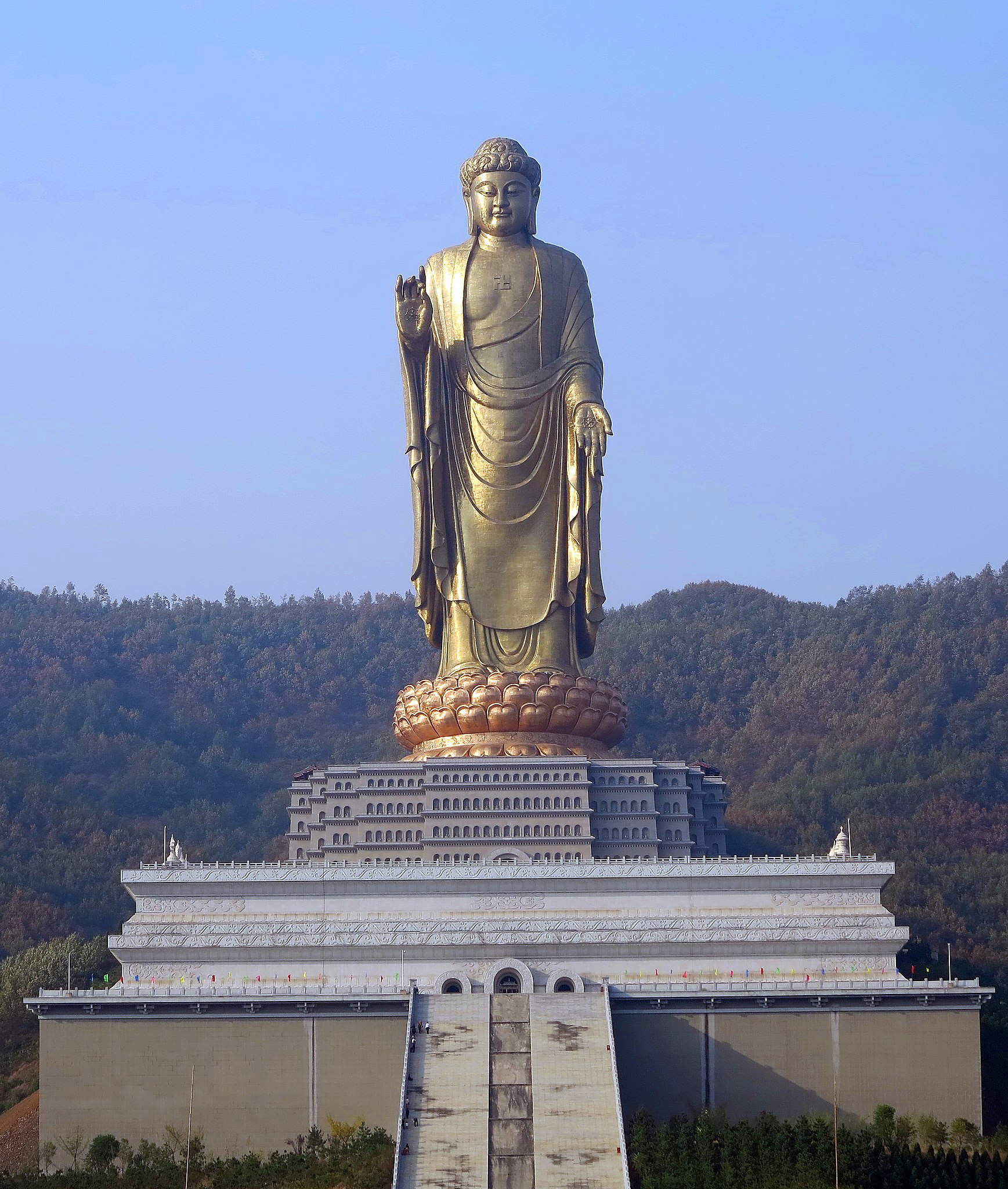
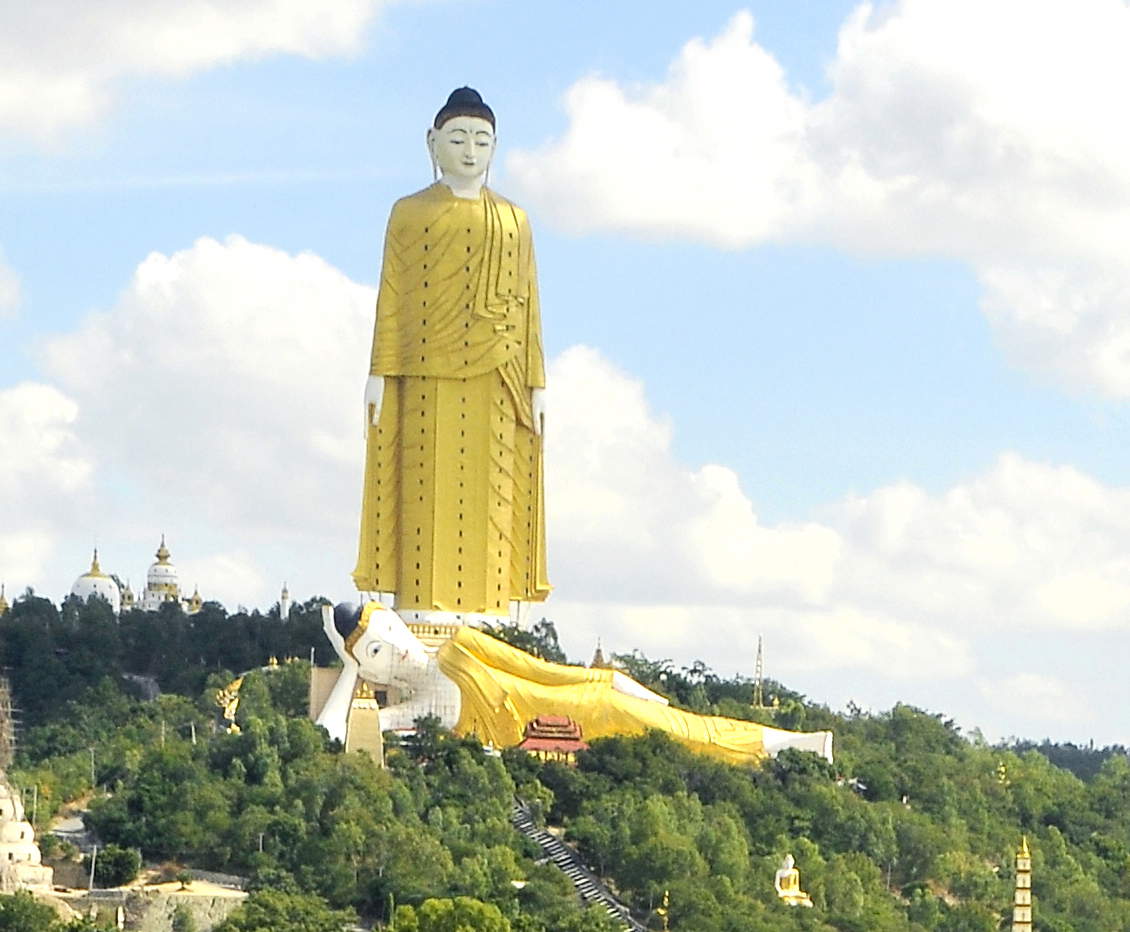
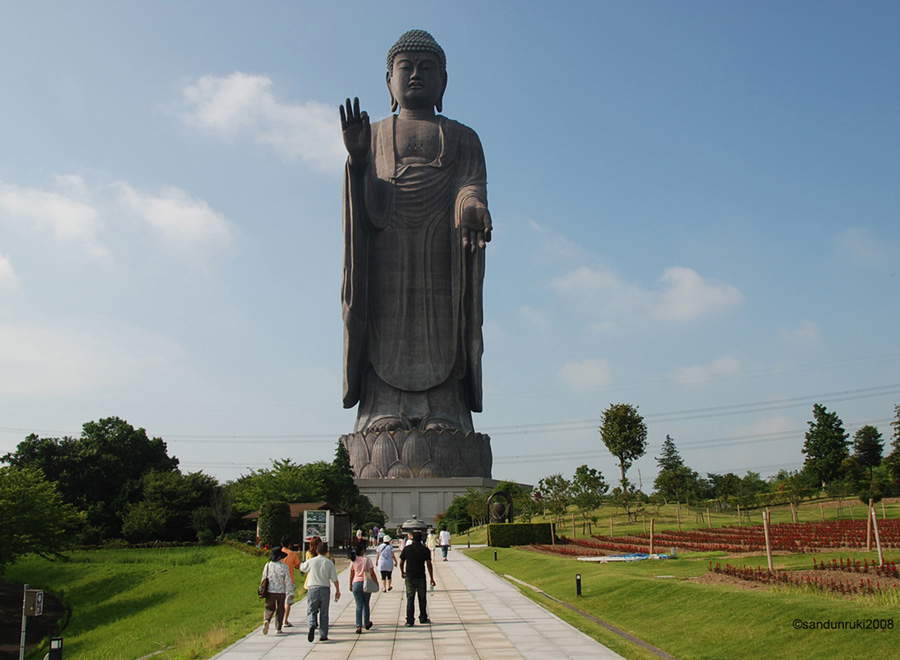

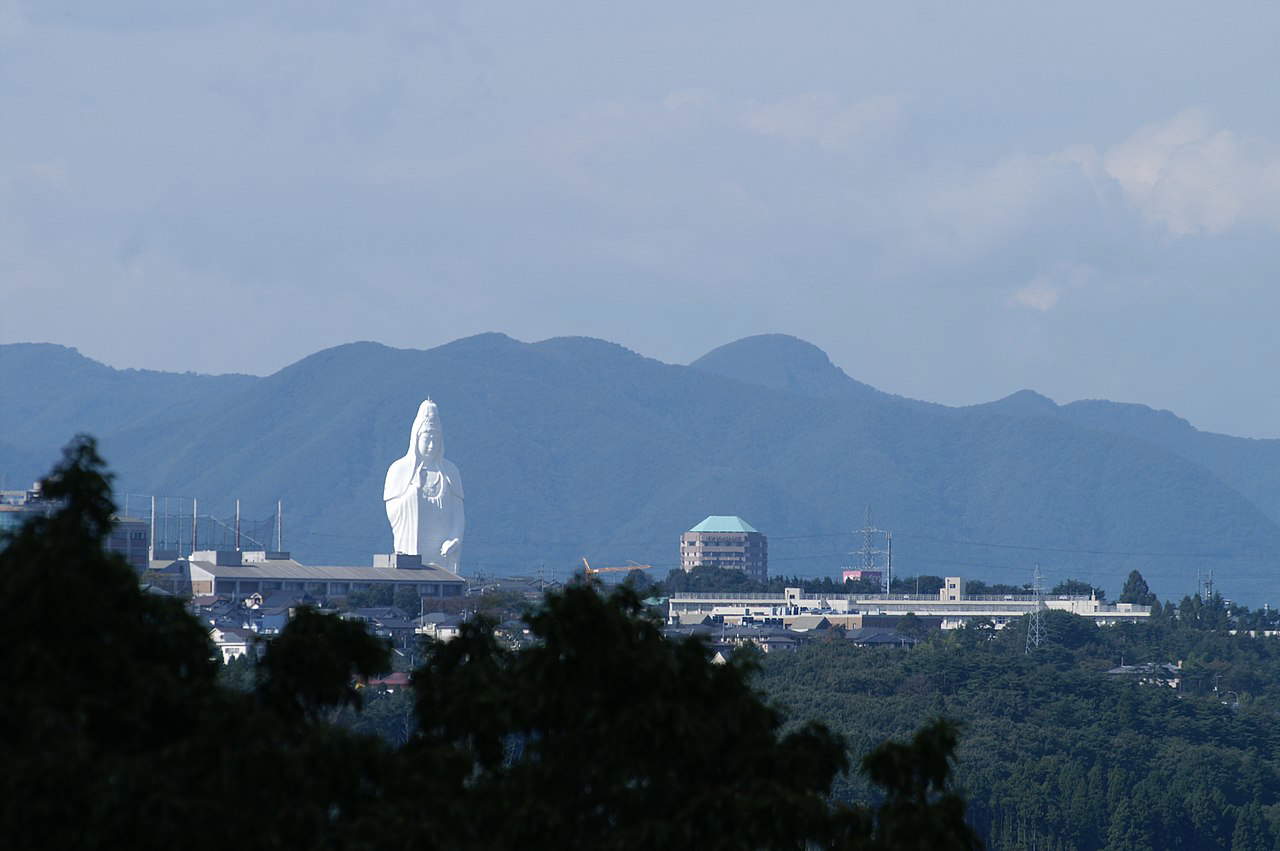


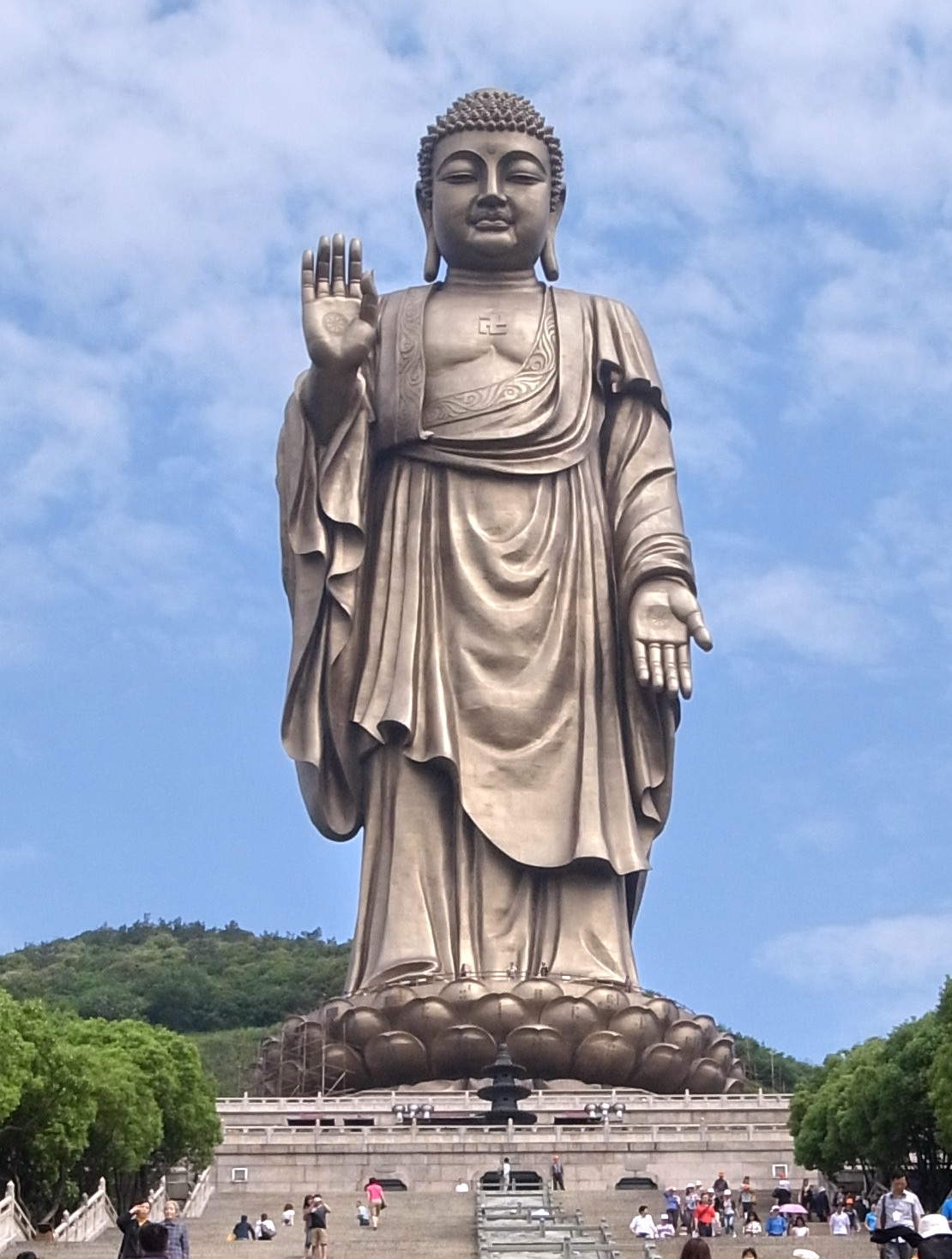
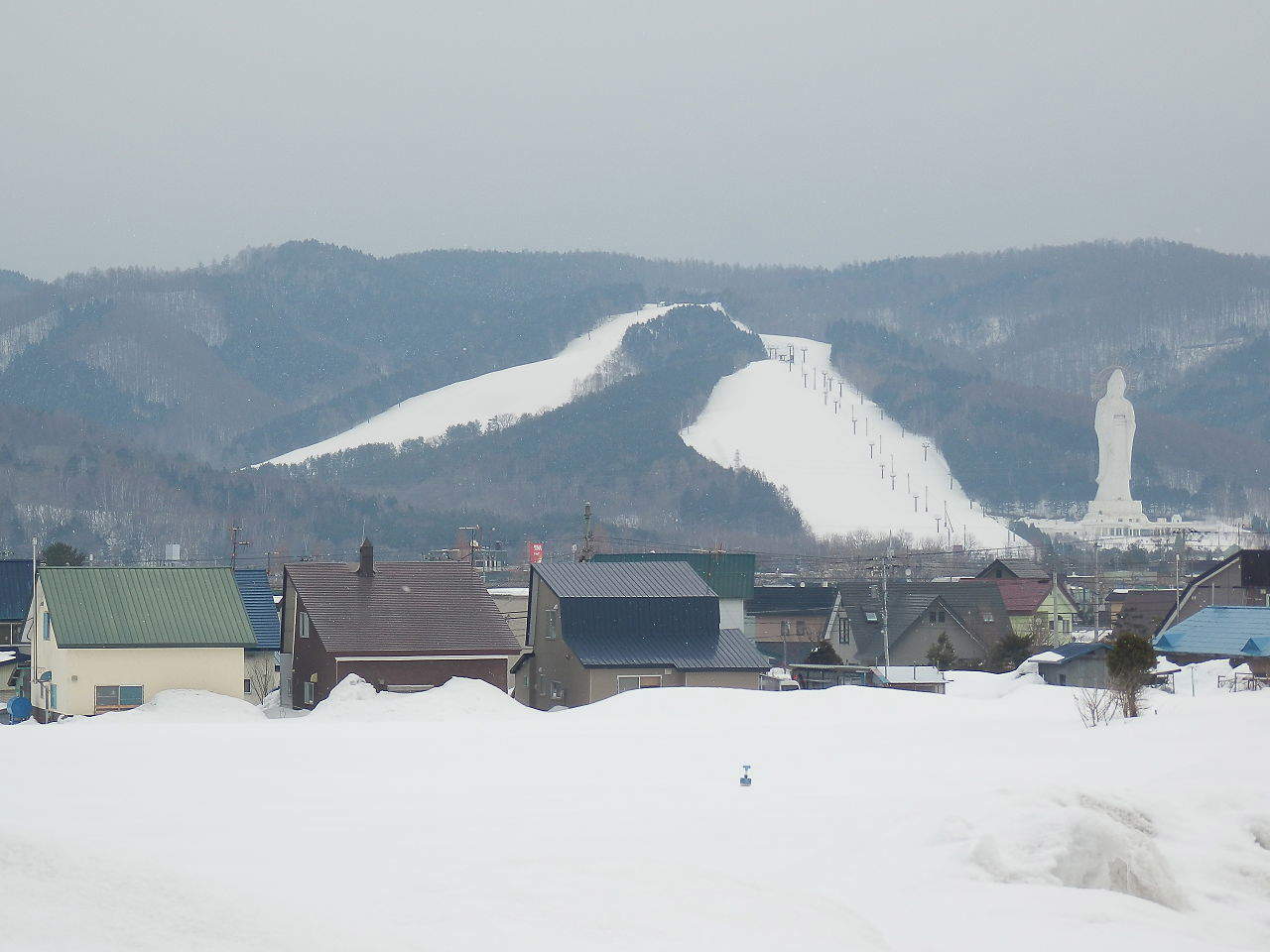
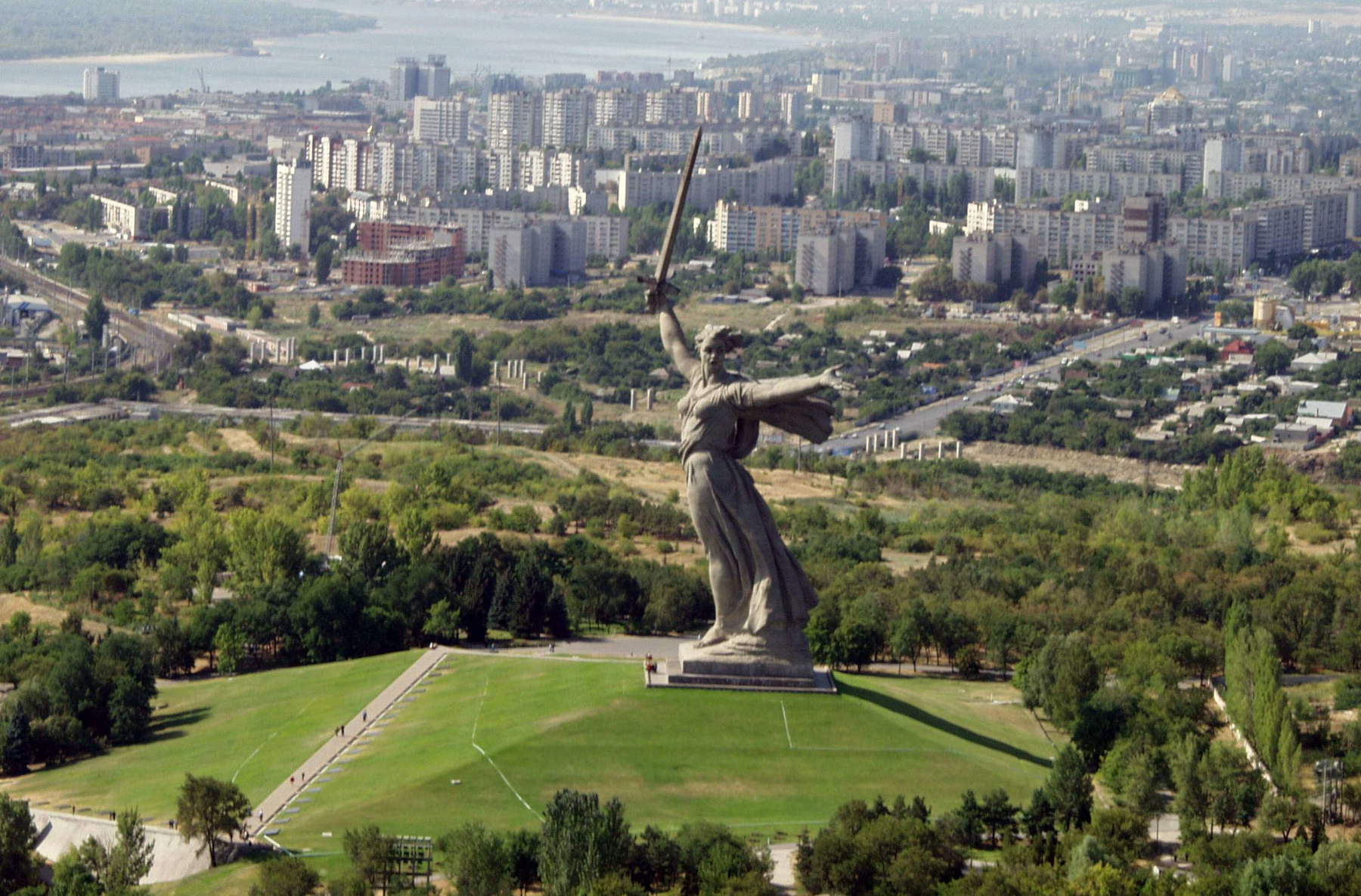
Continuing down the list, in sixth place is the Sendai Kannon in Sendai, Miyagi, Japan, 100 meters high and inaugurated in 1991; in seventh place is the Statue of Peter the Great, in Moscow, Russia, 96 meters high from 1997; eighth place for the Great Buddha of Thailand in Ang Thong, 92 meters high and inaugurated in 2008; ninth place for another Buddha, the Ling Shan Buddha in Wuxi, Jiangsu district, China, 88 meters high, finished construction in 1996; tied for ninth is the 88-meter-high Dai-Kannon of Hokkaidō in Ashibetsu, Japan, from 2008. Tenth position for The Motherland Calls!, a work located in Volgograd, Russia, inaugurated in 1967 and 85 meters high, which becomes 91 meters with the pedestal. It is followed in 11th place by the Guanyin of Hainan in Sanya, China, 80 meters high with a pedestal of another 28 meters. With a statue of the same height we return to Japan with theAwaji Kannon in Awaji, Hyogo prefecture, also 80 meters high. Two Buddhas follow: 12th position for the 72-meter-high Great Buddha of Maitreya in China.
We come to Eastern Europe with 62-meter-high Mother Ukraine in Kiev (thirteenth position), with a 40-meter base, erected in 1981. We return to the Far East with three Japanese statues and one Chinese one: the 61.5-meter-high Jibo Kannon in Kurume, Fukuoka Prefecture, Japan; the 61.5-meter-high Aizu Jibo Dai-Kannon in Aizuwakamatsu, Fukushima Prefecture; and the 56-meter-high Tokyo Bay Kannon in the Japanese capital’s bay. In Nanhai, Guangdong, we have the 61-meter-high Guanyin of Xiqiao, China.
The far more famous Statue of Liberty is far behind in this ranking, which considers the net height of statues excluding that of the various plinths or pedestals. The Statue of Liberty, inaugurated in 1886, with its tapered, slight profile is “only” 46 meters high. In fact, one has to go all the way to the 28th position in the rankings to find it. It is the most famous of them all, but perhaps not everyone knows that the name is longer than what is commonly used: it is The Liberty that Illuminates the World and was built by Frédéric-Auguste Bartholdi and Gustave Eiffel, the latter the creator of the lattice structure that supports it from the inside. The exterior is formed of machined copper plates. Crowned on her head, she is clad in a robe, and in her upward-facing hand is the famous torch, an identical one of which is in Paris positioned over the Pont de l’Alma, or bridge where Lady Diana found her death. In this case nothing religious: the statue is the personification of ’freedom,’ the supreme ideal good on which the United States was born.
 |
| From India to Thailand, here are the world's tallest statues |
Warning: the translation into English of the original Italian article was created using automatic tools. We undertake to review all articles, but we do not guarantee the total absence of inaccuracies in the translation due to the program. You can find the original by clicking on the ITA button. If you find any mistake,please contact us.